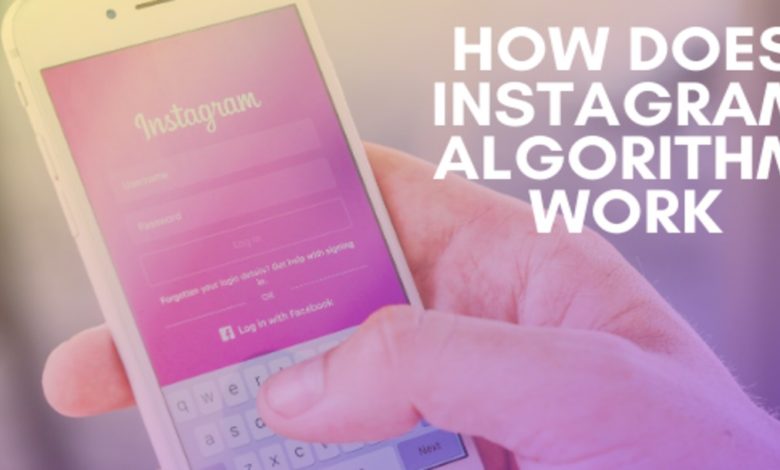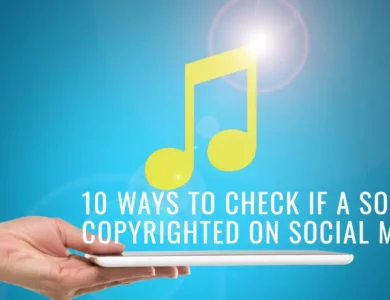
Understanding Instagram’s algorithm is a must if you want to know how your publications appear in the news-feed.
The better you understand how the Instagram algorithm works, the more likely you are to effectively optimize your publishing strategy to ensure the best visibility for your content.
Since its creation in 2010, Instagram had always displayed, on its news feed, the publications in an anti-chronological order, that is to say, that the most recent publications appeared at the top of the news feed, followed by the publications shared at an earlier time.
If the photo and video sharing platform has since developed very quickly, the influx of new members and the increase in the number of publications have had consequences for the visibility of information in the news feed.
Thus, users missed on average 70% of all publications and 50% of their friends’ publications before Instagram decided to implement an algorithm in 2016, definitively abandoning the anti-chronological order.
The platform communicated little when it was launched. Priority was given to the display of content identified by the algorithm as likely to interest its members.
We also knew that the relationship with the person who published and the freshness of the publication were two other factors taken into account as to the order in which the publications were displayed.
Earlier this year, Instagram explained in more detail how its news feed works.
In today’s article, I present 6 factors that make up the Instagram algorithm and address a few recurring questions on this subject. Then, I finish with 6 practical tips to optimize the visibility of your content.
Let’s start without further ado.
1. What are the factors of the Instagram algorithm?
The Instagram algorithm studies many criteria to determine the order of display of the content presented in its news-feed.
There are three main factors:
- Interest
- The freshness
- The relationship
- To which are added three secondary factors:
- Frequency
- The number of subscriptions
- Usage
Let’s take a closer look at each factor in detail.
Interest
Instagram presents the content identified by the algorithm as being most likely to interest you.
To accomplish this task, the algorithm probably studies the categories of content with which you interact now or have interacted in the past.
So, if you like or comment on publications related to photography, the news feed should present you with more content with this theme when it is approached by the accounts you follow.
Difficult to know exactly how Instagram determines the category of a publication. But we can assume that the social platform studies for example:
The caption and/or hashtags accompanying the visual element
Photos for interpretation thanks to specific recognition technology
The freshness
Freshness focuses on highlighting content shared recently over that which dates back several days or weeks.
For example, you might be more interested in photos of your best friend’s wedding that took place yesterday, rather than the launch of a product of your favorite brand featured in your news feed due to favorable engagement for several days.
Instagram, therefore, analyzes for how long a publication has been published to favor recent content. However, results may vary depending on when you last connected.
The relationship
If you regularly interact with a particular account, you establish a stronger connection with that account rather than with other users.
To assess the relationship between the two accounts, the signals studied are:
- Interactions with the content of the account (ex: like, comment, send via direct, save)
- Private messages
- Using the search feature to find the account
- The existence of a relationship in real life
Instagram, therefore, takes account of the relationship to distribute in your news feed more content from the accounts with which you have a closer connection.
Frequency
As we have seen before, Instagram is trying to show you the posts that are most likely to interest you since your last visit.
The order in which the publications are displayed is however changed according to your pace of consultation. Indeed, the news feed orders the content differently if you open the application 4 times an hour or 1 time every day.
Be aware that in the long run, your news feed may approach anti-chronological mode more when you connect very regularly.
The subscriptions
If you are subscribed to many accounts, Instagram introduces more varied publications in your news feed in terms of authors.
As a result, you will see more content posted by different accounts.
And then you see less content from specific users. Likewise, you also do not see all the publications of a particular account.
On the other hand, if you subscribe to a few accounts, you discover more publications from your close friends, your family or your favorite accounts.
Usage
The length of your sessions also influences the distribution of the publications served.
If you spend a lot of time on Instagram, the news feed displays content published later in its catalog.
While if your consultation is less diligent, you see in priority the best publications identified by the algorithm of Instagram.
2. Other considerations on the Instagram algorithm
Now that we have studied the main and secondary factors of the Instagram algorithm, let’s see what other official information is provided by the platform.
The algorithm has no preferential treatment as to the type of publication, either photo or video. On the other hand, if you engage more in one type of publication, then you receive more often in your news feed this type of publication.
The newsfeed does not favor users who use Stories, live video or any other native functionality.
You are not penalized if your publication rate is too high. However, the Instagram algorithm can add posts from other users to separate your posts.
The algorithm does not favor personal accounts or professional accounts: they are treated equally.
There is no such thing as shadow banning, a practice that makes certain publications by a specific author invisible. Instagram does not hide a user’s posts because it uses too many hashtags for example.
3. How to optimize your publications for the Instagram algorithm?
Let’s finish with 6 practical tips to optimize your publications to increase the visibility of your content.
Choose quality rather than quantity.
The average lifespan of a social media post is generally short. Often it is better to reason here in terms of hours rather than days. This characteristic pushes companies to increase the number of their publications.
When an algorithm is implemented, the content that generates the most engagement is often highlighted. This approach improves the user experience and increases the retention time on the platform.
The more consistent you create relevant content with high added value, the better your chances of benefiting from the Instagram algorithm.
Publish when your audience is most active.
When you share a publication, Instagram analyzes the commitment received: likes, comments, sharing in a private message, etc.
The sooner this engagement arrives, the more it shows that your content interests users.
To identify the days and times when your subscribers are most active, go to your Instagram account statistics and study the Audience section.
Work on your publications to retain your audience.
The Instagram algorithm not only studies engagement but also time spent on your content.
A user can very well choose not to engage with your publication without this lack of action necessarily showing a lack of interest in your message.
So you need to make arrangements to add context to your posts and use the caption wisely.
Increase your discoverability with relevant hashtags.
Hashtags are an important feature on Instagram that allows you to discover publications, including untracked accounts, related to a theme.
If you want to increase the reach of your content, accompany each of your publications with relevant hashtags.
Note that you can use a maximum of 30. But then again, prefer quality over quantity.
Capitalize on Stories to engage with your community.
The people you engage with regularly will see more of your content.
If you follow my webinars on Instagram, you know that I’m a big fan of using Instagram Stories to build engagement.
Although companies are often reluctant to use live video, it is still a great way to build proximity to your audience.
Also, don’t hesitate to explore the polls and questions.
Share your posts in the Stories.
Stories are a second entry point for your content on Instagram, so why not do it? You can very well use Stories as for a vase system communicating with your publications.
This year, Instagram created a feature that allows you to share one of your publications in a Stories at the touch of a finger. To do this, simply press on the paper plane located below the chosen publication and select “Add a publication to your Story”. And there you go!
If the operation remains very simple, don’t forget to contextualize your Story to encourage users to discover your publication. If you are facing low followers issues then you can buy Instagram Followers UK for making your social media presence up to dates.
Conclusion
Instagram still presents opportunities today to obtain an interesting organic reach without the need to advertise, unlike Facebook for example.
If you want to get the most out of the Instagram algorithm, you need to find strategies to increase the time spent on your posts, increase engagement on your content, create a genuine authentic relationship with your community, acquire new subscribers. From your publications or amplify the visibility of your messages.
It is interesting to note that certain criteria taken into account by the Instagram algorithm will make it more difficult for professionals to use bad practices in search of shortcuts to achieve their goals.
[Your turn now] What are your observations as to the consequences of the Instagram algorithm on your publications in terms of reach and engagement? Share with us your best tips for increasing the visibility of your publications.






